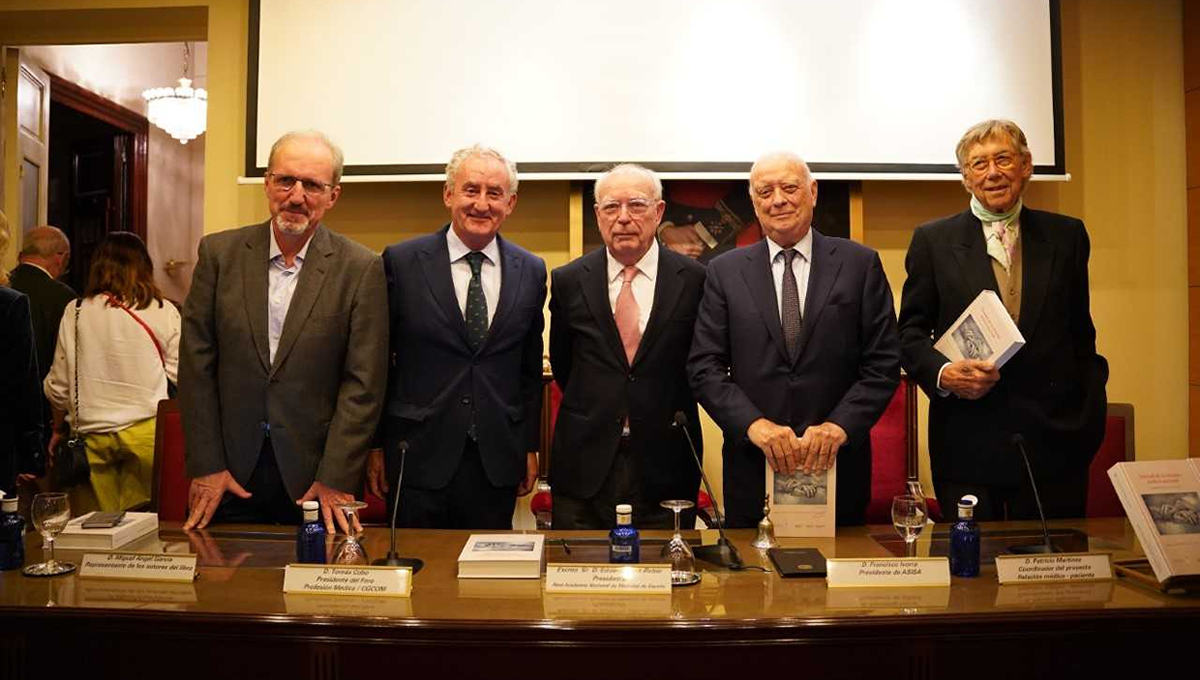The relationship between doctor and patient is one of the most important issues in healthcare. That is why the Medical Profession Forumin collaboration with the ASISA Foundationhas presented at the Royal National Academy of Medicine the second edition of the Manual of the Doctor-Patient Relationship, an expanded version that aims to update the main challenges that this historical relationship has faced in recent years.
Specifically, as pointed out Miguel Angel Garciaone of the authors of the manual, in the five years since the first edition was presented as part of the project that seeks to declare the doctor-patient relationship as UNESCO Intangible Heritage, there have been situations that have directly affected it, such as the Covid-19 pandemicto which a specific chapter has been dedicated and which forced doctors and other health professionals to expose themselves for the public good while the population remained confined. Then, the doctor-patient relationship was completely affected by the enormous healthcare overload what he supposed and the need for protective measures for professionals and patients, although it also stimulated the creativity of each to find alternative ways of communicating.
To this situation we must add the great development of information technologies and information systems.artificial intelligencewhich can serve both to facilitate work and to put human activities of all kinds at risk. The implementation of these technologies in the healthcare field is becoming increasingly evident and can significantly affect the personal relationship between healthcare providers and patients. This new situation has developed in athematic block on influence of telemedicine and information and communication technologies in healthcare practice and the development of that same relationship.
The manual maintains content from the first edition, expanding in some aspects such as the anthropological foundation of the doctor-patient relationship.
Furthermore, the manual They maintain contents from the first edition, expanding in some aspects such as the anthropological foundation of the doctor-patient relationship, the condition of vulnerability of professionals, the necessary gender orientation, the community and social insertion of health activity and the communication and narrative dimensions of a relationship in which one and another agent develops it through communication.
As García pointed out, it is an effort of the Spanish medical organizations and, particularly, of the work and coordination team of the project for the recognition of the doctor-patient relationship as a World Heritage Site, which wishes to promote and develop a fundamental and foundational aspect of medical practicean effort that, he regrets, will go nowhere if in parallel a radical effort by society is not developed to promote the doctor-patient relationship within a quality healthcare activity.
In this sense it was also expressed Juan Carlos Hernandezwho remembered that the clinical relationship has changed in recent decades and the disease/health binomial has changed, as has the concept of need in health, often confusing the need with the demand and desire of citizens/patients, incorporating the felt need as a demand to the health system. Thus, with this paradigm shift, they need new tools, new clinical interview modelsand these tools will be clinical interviews that go beyond the interview focused on the nature of the health problem and address an interview focused on the patient in a bio-psycho-social way, which allows an emotional climate that results in the trust as main value between doctor and patient.
The aim is to promote and develop a fundamental and foundational aspect of medical practice.
He appealed to that same trust in his speech. Patricio Martínezdriver of the candidacy of the Doctor-Patient Relationship as Intangible Heritage of UNESCOwho stated that this represents a therapeutic and treatment improvement and that it has been seen threatened by the intersection of inferences of various kinds over the years. In addition, he thanked the authors for their work on the manual, the professionals for their clinical work, and also the patients, who are “the reason for the profession.”
At the event, led by president of the Royal National Academy of Medicine, Eduardo Díaz-Rubio, has also participated president of the ASISA Foundation, Francisco Ivorrawho has admitted that although technological innovation is here to stay and in his case it is artificial intelligence that is being used for issues such as agenda management, if he had to choose a conversation that should be held between humans, that would be without a doubt the doctor-patient relationship.
Lastly, the president of the CGCOM and the Profession Forum, Tomás Cobowanted to highlight the importance of completing the medical act and the communication with the patientsince “it is essential. The part of compassion and accompaniment that is exercised is completely fundamental”, he stated before thanking those present for their attendance and the authors for their work on this revised and expanded manual.
ConSalud’s content is prepared by journalists specialized in health and endorsed by a committee of top-level experts. However, we recommend that the reader consult any health-related questions with a healthcare professional.
